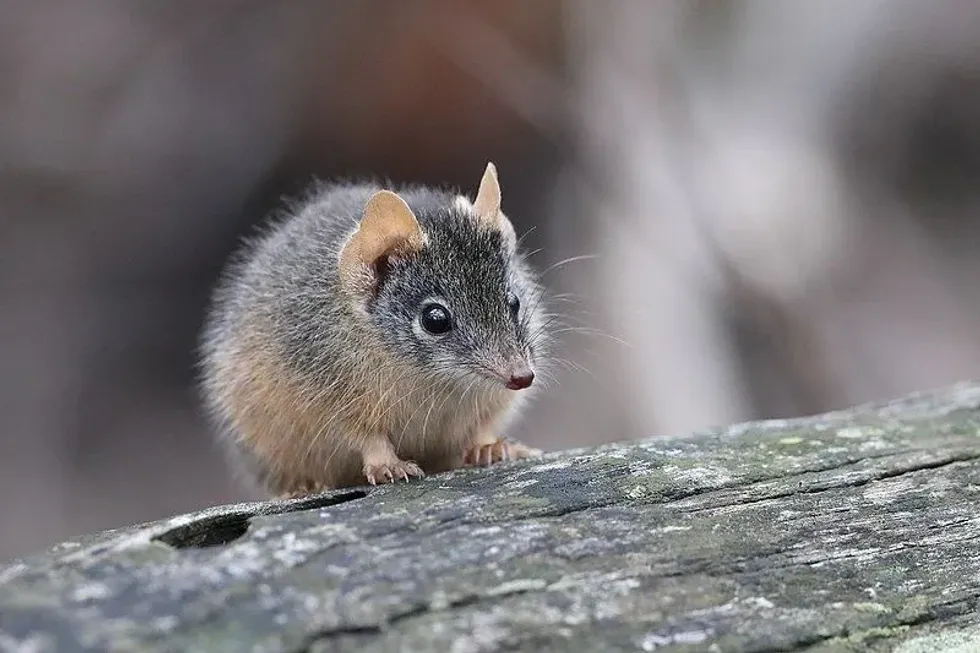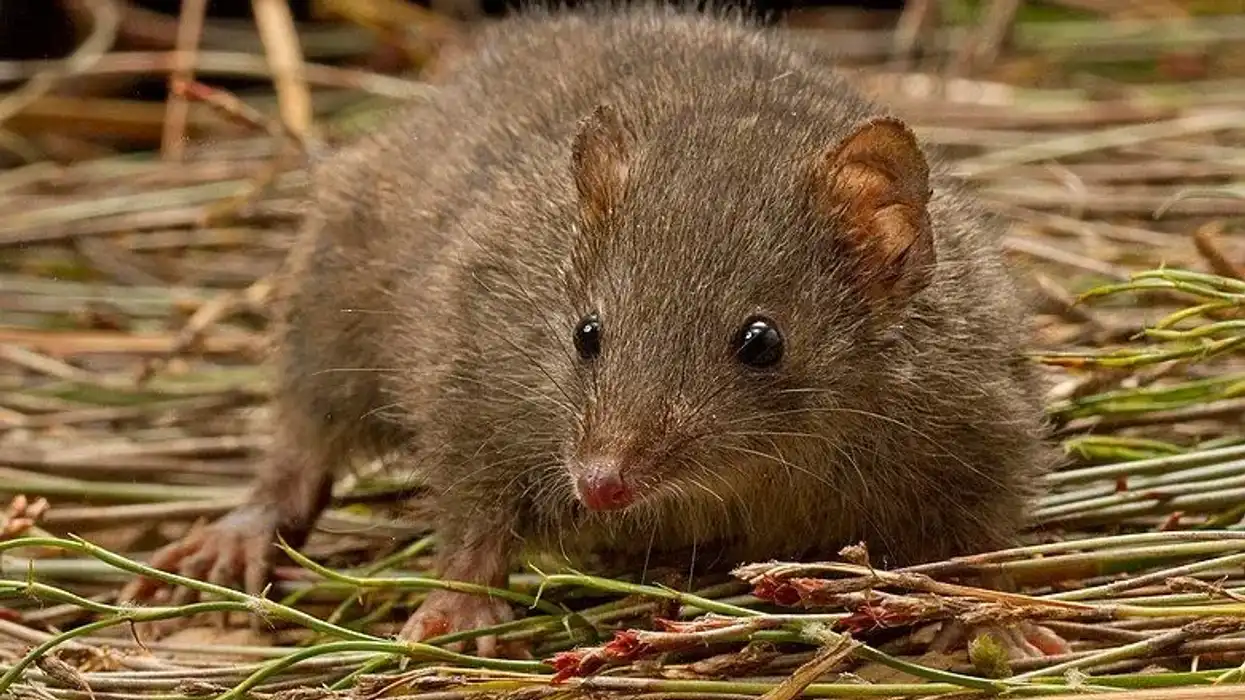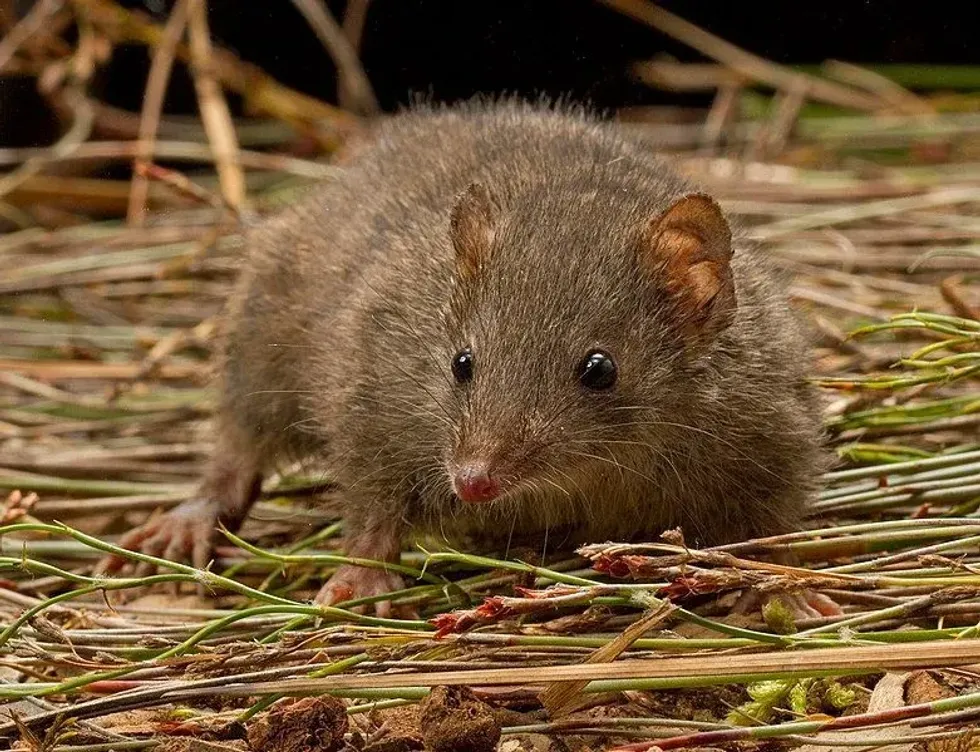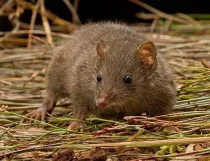Fun Dusky Antechinus Facts For Kids

With a dark brown to a black fur coat, beady eyes, a pointy snout, and small ears that hardly have above the fur, any observer will easily confuse a dusky antechinus (Antechinus swainsonii) for a mouse. However, this species of antechinus is a marsupial and is quite different from rodents like rats and mice!
The dusky antechinus in genus Antechinus, species swainsonii, also known as the dusky marsupial mouse or Swainson's antechinus, is a species of antechinus endemic to mainland Australia and Tasmania. Antechinuses are carnivorous marsupials of the family Dasyuridae.
Currently, there are over 15 recognized species and several subspecies of these unique mammals with populations spread throughout Australia. The dusky antechinus is one such species of antechinus with populations concentrated primarily in south-eastern Australia and the island of Tasmania.
The small size of the Tasmanian dusky antechinus may suggest otherwise, but these marsupials are avid carnivores that primarily feed on soil invertebrates. Their diet can comprise anything from worms and insects to lizards, small birds, and even vegetation.
The Swainson's antechinus mostly dwells in rainforests and moist sclerophyll forests, with activity peaking during the night. A unique feature of these forest-dwelling marsupial animals is that males die soon after mating due to the physiological changes and high-stress levels brought about by the mating process!
Aren't dusky antechinuses absolutely fascinating animals? Read on to know more about them!
Want to learn more about unique animals? Head to our wood mouse and juniper titmouse articles for some interesting reads.
Dusky Antechinus Interesting Facts
What type of animal is a dusky antechinus?
The dusky antechinus (Antechinus swainsonii) is a marsupial of the family Dasyuridae.
What class of animal does a dusky antechinus belong to?
The dusky antechinus (Antechinus swainsoni) belongs to the class of mammals.
How many dusky antechinuses are there in the world?
The exact population size of dusky antechinuses (Antechinus swainsonii) is not available.
Where does a dusky antechinus live?
Populations of dusky antechinuses (Antechinus swainsonii) primarily inhabit rainforests and moist sclerophyll forests. This marsupial prefers habitats with dense understory and may even be found in fields with overgrown, tall grasses.
What is a dusky antechinus's habitat?
The forest-dwelling dusky antechinus population is restricted to mainland Australia and Tasmania. These mice-like animals are mainly found in south-eastern Australia with a range that includes south-eastern Queensland, south-western Victoria, and New South Wales.
These marsupials are a common sight in the mountain forest regions such as the Brindabella Ranges and the Kosciuszko National Park. Within the mountain habitat, populations of these marsupials thrive in tall open forests and alpine heaths with dense understory.
Who does the dusky antechinus live with?
The dusky antechinus (Antechinus swainsonii) is a solitary animal. Adult males and females of this species rarely come together, except during the breeding season.
Outside the breeding season, social interactions among the animals of this species may involve those between females and their young. Even though this species is not particularly territorial, members have a definite home range within their habitat.
How long does a dusky antechinus live?
The life history of the dusky antechinus is quite unique. While the average lifespan of the dusky antechinus has a range between two to three years in captivity, members of wild populations do not make it that far.
The males die after mating, and the females usually die after rearing the first litter. Either way, males and females of the wild population hardly live beyond two years.
How do they reproduce?
The mating or breeding season of the dusky antechinus spans between the months of May and September, with the exact timing of mating correlating strongly with ambient environmental conditions. In fact, the climate, altitude, temperature, and availability of food are prime factors that influence the mating timing of this species.
Male members of this species face a high degree of competition when it comes to securing a mate. Mating is followed by a gestation period of 29-36 days.
By 21 days, a large and concealed abdominal pouch appears in the females that divides into two halves by around 23 days. The pouch becomes obvious only a few days before birth.
Like in most marsupials, the pouch serves as a protective chamber for holding and securing the young. Dusky antechinus females produce a litter comprising six to eight young ones. The young are born almost devoid of fur, which begins to appear at about eight weeks.
Eyes open shortly after. The young stay alone in the nest for about 10 weeks and start taking a solid diet from about 12 weeks.
Upon completion of roughly 14 weeks from birth, the young marsupials are finally ready to leave the nest but cling on to their mother's backs. Males die shortly after mating usually within three weeks, and females die after rearing their first litter.
What is their conservation status?
According to assessments by the International Union for Conservation of Nature (IUCN) Red List of Threatened Species, the dusky antechinus (Antechinus swainsonii) is a species of Least Concern. The population of these forest-dwelling marsupials is abundant, and they are in no danger of extinction in the near future.
Dusky Antechinus Fun Facts
What does the dusky antechinus look like?
The dusky antechinus is the largest species of antechinus with prominent differences between the male and the female. The body is covered with a fur coat that may range in color from dark brown and dark gray to black. The dusky antechinus comes in two forms - dark and pale.
The dark form's body is covered with dark fur, and the pale form's body is relatively faded. However, the dusky antechinus, in general, has a darker-colored body compared to its relatives.
Males and females have a rather pointy snout compared to mice. The ears are small and rounded, barely rising above the body. Both males and females have a significantly long tail.
 * We've been unable to source an image of a dusky antechinus and have used an image of a yellow-footed antechinus instead, another species of antechinus in the family Dasyuridae. If you are able to provide us with a royalty-free image of a dusky antechinus, we would be happy to credit you. Please contact us at hello@kidadl.com.
* We've been unable to source an image of a dusky antechinus and have used an image of a yellow-footed antechinus instead, another species of antechinus in the family Dasyuridae. If you are able to provide us with a royalty-free image of a dusky antechinus, we would be happy to credit you. Please contact us at hello@kidadl.com.How cute are they?
The small size, gleaming eyes, and pointed mouth add to the cuteness of dusky antechinuses and make them look quite adorable!
How do they communicate?
The dusky antechinus is a particularly vocal antechinus species with chattering and hissing reported to be the most commonly produced sounds.
Mating rituals of the dusky antechinus are quite violent. During this time, the males have been observed grabbing the females by the scruff of their neck. The female members, in turn, respond by open-mouthed hissing, rolling, and kicking.
How big is a dusky antechinus?
The body length of the dusky antechinus can go up to 7.5 in (19 cm) with a tail length of 4.7 in (12 cm). Males are usually larger in size than females. The animal is slightly larger than the brown antechinus (Antechinus stuartii).
How fast can a dusky antechinus run?
No information is available regarding the running speed of the dusky antechinus.
How much does a dusky antechinus weigh?
Males and females of this species have different bodyweight range. While males weigh about 2.3 oz (65 g) on average, females are lighter, weighing about 1.4 oz (41 g).
What are the male and female names of the species?
Male and female antechinuses do not have distinct names.
What would you call a baby dusky antechinus?
A baby dusky antechinus does not have any special name. Young dusky antechinuses develop very slowly and take about eight months to mature, which is almost the beginning of the next breeding season.
What do they eat?
The dusky antechinus diet primarily comprises soil invertebrates. However, their diet can be quite diverse, ranging from insects and worms to small birds, lizards, fruits, and vegetation.
Male dusky antechinuses do not eat during the mating season. However, energy for sustenance is derived from the protein store in the body, which gradually weakens the immune system of the males. As a result, they usually die within three weeks of mating.
Are they dangerous?
The dusky antechinus is not known to be dangerous to humans.
Would they make a good pet?
Owing to their harmless nature, the dusky antechinus may be a good choice for pets. However, these animals have a very short lifespan that is not really an ideal characteristic of a pet.
Did you know...
The first description of the dusky antechinus was given in 1840 by the English naturalist George R. Waterhouse.
The dusky antechinus was the second species of antechinus to be described.
The name Swainson's antechinus is in honor of the English entomologist, conchologist, malacologist, ornithologist, and artist William John Swainson.
The dusky antechinus has three recognized subspecies. These are the A. s. swainsonii, found in the island of Tasmania, A. s. mimetes found in south-western Victoria, eastern New South Wales, and south-eastern Queensland, and A. s. insulanus found in Victoria's Grampians National Park.
Even though antechinuses are usually nocturnal, the dusky antechinus is also pretty active during daylight hours.
The breeding time of the dusky antechinus populations varies with location. Populations in lower altitudes and those in coastal regions breed earlier than populations residing in higher elevations or inland areas. Likewise, populations on the island of Tasmania breed later than those on the mainland.
Offspring of the dusky antechinus are vulnerable to early death, primarily due to lack of food. A female dusky antechinus usually produces supernumerary offspring, meaning the number of offspring is greater than the number of available teats. As a result, babies that are unable to access a teat will eventually die.
The brown antechinus (Antechinus stuartii) and agile antechinus (Antechinus agilis) have very similar physical appearances. The two species are difficult to distinguish, except by their geographical distribution.
How high can the dusky antechinus jump?
No information is available regarding how high the dusky antechinus can jump. These animals mostly dwell on the forest floor with thick vegetation cover. They are known to climb trees.
Is the dusky antechinus endangered?
The dusky antechinus is not endangered. However, the local population in many areas may be under threat due to controlled burning, replacement of native forests with pine plantations, and predation by cats and red foxes.
Here at Kidadl, we have carefully created lots of interesting family-friendly animal facts for everyone to discover! Learn more about some other mammals from our little pocket mouse facts and gopher facts pages.
You can even occupy yourself at home by coloring in one of our free printable long eared jerboa for kids coloring pages.
Main image by Catching The Eye
Second image by patrickkavanagh
We Want Your Photos!
More for You
See All
Bachelor of Arts specializing in Journalism and Mass Communication, Postgraduate Diploma in Sports Management

Moumita DuttaBachelor of Arts specializing in Journalism and Mass Communication, Postgraduate Diploma in Sports Management
A content writer and editor with a passion for sports, Moumita has honed her skills in producing compelling match reports and stories about sporting heroes. She holds a degree in Journalism and Mass Communication from the Indian Institute of Social Welfare and Business Management, Calcutta University, alongside a postgraduate diploma in Sports Management.
Bachelor of Arts specializing in Economics

Gowri RaoBachelor of Arts specializing in Economics
With a bachelor's degree in Economics from Krea University, Gowri is a highly skilled data analyst and an expert in regression and causation modeling. Her interests in economic trends, finance, and investment research complement her professional expertise. In addition to her professional pursuits, Gowri enjoys swimming, running, and playing the drums, and she is also a talented tutor.
Disclaimer
1) Kidadl is independent and to make our service free to you the reader we are supported by advertising. We hope you love our recommendations for products and services! What we suggest is selected independently by the Kidadl team. If you purchase using the Buy Now button we may earn a small commission. This does not influence our choices. Prices are correct and items are available at the time the article was published but we cannot guarantee that on the time of reading. Please note that Kidadl is a participant in the Amazon Services LLC Associates Program, an affiliate advertising program designed to provide a means for sites to earn advertising fees by advertising and linking to Amazon. We also link to other websites, but are not responsible for their content.
2) At Kidadl, we strive to recommend the very best activities and events. We will always aim to give you accurate information at the date of publication - however, information does change, so it’s important you do your own research, double-check and make the decision that is right for your family. We recognise that not all activities and ideas are appropriate for all children and families or in all circumstances. Our recommended activities are based on age but these are a guide. We recommend that these ideas are used as inspiration, that ideas are undertaken with appropriate adult supervision, and that each adult uses their own discretion and knowledge of their children to consider the safety and suitability. Kidadl cannot accept liability for the execution of these ideas, and parental supervision is advised at all times, as safety is paramount. Anyone using the information provided by Kidadl does so at their own risk and we can not accept liability if things go wrong.
3) Because we are an educational resource, we have quotes and facts about a range of historical and modern figures. We do not endorse the actions of or rhetoric of all the people included in these collections, but we think they are important for growing minds to learn about under the guidance of parents or guardians.







